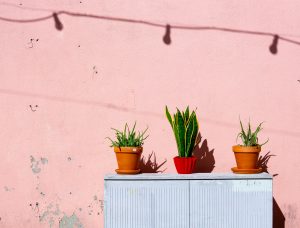A therapeutic garden is a place where people can relax, enjoy the outdoors, and find peace. It’s also an excellent escape for individuals living with mental or physical disabilities. Therapeutic gardens are becoming more popular in hospitals worldwide because of their many benefits.
Therapeutic gardening offers an opportunity to be creative while engaging in something good for your health. If you want to start one at home, here are some tips on getting started.
How to Start a Therapeutic Garden
You need to take a few steps to start a therapeutic garden. First, you need to choose a location for the garden. It’s essential to choose a quiet, sunny spot that is accessible to everyone. You also need to consider the needs of the individuals who will be using the garden. For example, if someone uses a wheelchair, make sure the garden is wheelchair accessible.
Next, you need to decide what type of garden you want to create. There are many types of therapeutic gardens, so you can choose one that best suits your needs and interests. Popular therapeutic gardens include herb gardens, sensory gardens, and peace gardens.
What to Include in Your Therapeutic Garden
-
Plants
Once you’ve chosen a location and type of garden, you can start planting. When it comes to therapeutic gardens, plants are essential. Not only do they add beauty to the garden, but they also have therapeutic properties that can benefit individuals who are living with mental or physical disabilities.
When choosing plants for your therapeutic garden, it’s essential to consider your area’s climate and weather conditions. You also need to select plants that are easy to maintain and grow well in your area. It’s a good idea to choose various plants so that everyone can find something they like. Some of the best plants to include in a therapeutic garden are lavender, chamomile, rosemary, thyme, and peppermint. These plants are known for their calming and soothing properties. To choose the ideal plants to grow in your area and prevent insect infestations, you can enlist the help of horticulture experts.
-
Trees
Trees are also an essential part of a therapeutic garden. Not only do they add beauty to the garden, but they also provide shade and can help reduce stress levels. When choosing trees for your garden, make sure to select ones native to your area. For example, banana trees are popular in Florida because they thrive in the heat.

-
Water Features
Water features are another way to create a calming and peaceful outdoor space. Once you’ve chosen a location for your garden, you can use water features to help make it more beautiful. Some popular types of water features include ponds, fountains, and pools.
Some people choose to use a pond as a water feature in their therapeutic garden. A pond is a good choice for cold climates because the plants will provide insulation from the cold.
In warmer climates, pools are a great option because they keep plants from being damaged by heat or sunburned. It’s easier to maintain as well as look after plants that are located near a pool.
Fountains are a popular choice for therapeutic gardens because they provide a soothing sound that can be relaxing.
How to Maintain Your Therapeutic Garden
Once your garden is planted, it’s important to maintain it so that the plants have a chance to grow and flourish. It’s recommended you water your garden once or twice per day, especially during hot summer months. It also helps to fertilize the garden every few weeks since some therapeutic plants require more nutrients than others. You might consider planting herbs or vegetables alongside your flowers if you want to have fresh produce available at all times.
While most therapeutic gardens require very little maintenance after they are set up, some factors influence how often you’ll need to check on your garden. For example, if you live in an area where it snows during the winter, your garden will require more care than usual to prevent it from dying.
Of course, even if your therapeutic garden requires minimal maintenance, it’s still essential to check on it regularly throughout the year. This way, you can make sure the plants are healthy and thriving. If there is anything wrong with them, or they need water or fertilizer, you’ll be able to take care of that right away before the problem worsens.
Final Thoughts
Therapeutic gardens are the perfect way to add beauty and calmness to your outdoor space. Whether you’re looking for a place where friends or family can go when they need some time away from their busy lives, or if you want an area that is restful and serene, therapeutic gardens have something for everyone. The plants in these gardens increase mental clarity while reducing physical pain through aromatherapy properties. If you’ve been considering adding a therapeutic garden, you can follow the tips to get started.




